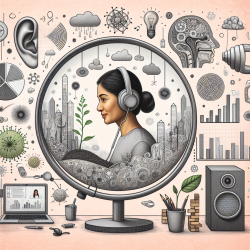Understanding the Impact of Air Pollution on Health and Physical Activity
Recent research highlights the multifaceted health threats posed by ambient air pollution, particularly in China. The study titled Ambient air pollution in China poses a multifaceted health threat to outdoor physical activity underscores the complexities of balancing outdoor physical activity with the risks associated with air pollution exposure. This is especially pertinent in regions experiencing rapid industrialization and urbanization, leading to significant environmental degradation.
Implications for Practitioners in Speech Language Pathology
As practitioners providing online therapy services, such as those at TinyEYE, it's crucial to integrate environmental health awareness into our practices. While our primary focus is on speech and language development, understanding the broader health context in which children live can enhance our therapeutic approaches. Here are several ways practitioners can improve their skills and outcomes by considering the research findings:
- Educate Families: Use therapy sessions as an opportunity to educate families about the impact of air pollution on overall health, including speech and language development. Discuss strategies to mitigate exposure, such as using air purifiers or planning outdoor activities during times of lower pollution levels.
- Incorporate Environmental Factors into Assessments: Consider environmental factors, such as air quality, when assessing a child's progress. Poor air quality can exacerbate respiratory issues, which may indirectly affect speech and language development.
- Promote Indoor Activities: Encourage families to engage in indoor physical activities that can promote overall health without the risk of air pollution exposure. This is particularly important for children with respiratory conditions.
Encouraging Further Research and Policy Development
The research calls for a deeper understanding of the point at which outdoor exercise in polluted environments becomes more harmful than beneficial. Practitioners can advocate for further research in this area and support public health policies aimed at improving air quality. By staying informed and involved, we can contribute to creating healthier environments for children to thrive.
To read the original research paper, please follow this link: Ambient air pollution in China poses a multifaceted health threat to outdoor physical activity.










